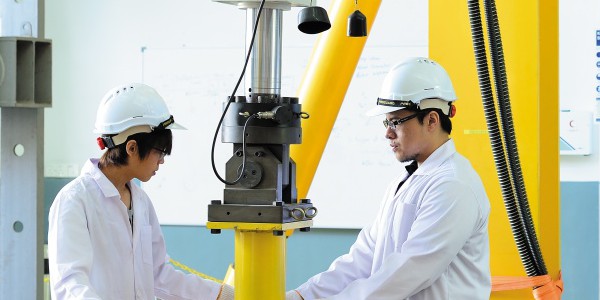
April 8, 2015, by Teaching at Nottingham
Academic Development from Day One: The Department of Civil Engineering
In conversation with Dr Martin Smith and Dr Barbara Turnbull, Faculty of Engineering
Martin:
“I think what’s come out of our discussions with the Teaching Transformation Programme team is that we need to get students thinking about problem solving in the wider context of Civil Engineering from the start of their course, to get them thinking like university students. So [in terms of the programme review] we are considering reviewing Year One first. If we lose them in the first year, then I think we have lost them for the rest of their course.”
Barbara:
“I think it’s good that, [as part of the programme review,] you’re asking academics to do what they do, which is coming up with core problems and questions and basically just doing our job in a slightly different way. It’s a case of ‘well, if this is going to happen, how do we solve the problem?’”
“I think it would be good to get students to think of themselves and their own learning in a reflective way. That was one of the points we wanted to address [with the Teaching Transformation Programme]: getting students to be more self-motivated in self-learning.”
Martin:
“There is a step change up from being a student to then being responsible for constructing a building. I believe that students need to learn to take responsibility including for learning. It is trying to get that mutual understanding of what our role is as teachers and what their role is as students and the fact is they are working for themselves and we can’t make them learn. A person has to want to learn.”
Barbara:
“I think if we can [draw on links with industry to inform the programme review] that is a really good argument to say, well, this will make you into a professional, qualified civil engineer who can go and practice in the real world.”
Sample project
‘The idea is that assessment is reliable, forces students to study, that it is problem based and that at the end the students have to be competent enough to answer questions on all aspects of the course.’
Professor Glenn McDowell, Head of Civil Engineering
A Boeing 747 has ditched 10 miles off the coast of Cornwall. Miraculously, all passengers and crew escaped the sinking fuselage and were rescued by vessels in the vicinity. The largely intact aircraft now lies at a depth of 50m. Your task is to plan the salvage of the aircraft. Your plan must allow the aircraft to be raised with minimal further damage to facilitate an investigation of the cause of the accident. Due to the limited availability of specialist lifting vessels, you have been contracted to investigate two alternative salvage options:
Option 1: Design a single or series of floating structures on which crane structures can be supported.
Option 2: Design a single or series of temporary lifting structure to be founded on/in the soft sea-bed.
Both options will need to take account of the challenging site conditions and must consider the full salvage process; i.e. design of the structure and the lifting process.
Having developed to complete design options, you must evaluate the both and make a recommendation to your client.
No comments yet, fill out a comment to be the first

Leave a Reply